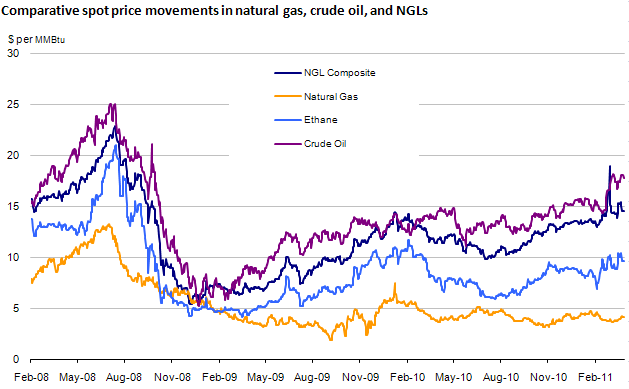
Ethane prices trail other natural gas liquids

Since 2009, ethane prices have maintained a fairly tight linkage to natural gas prices. This is in contrast to prices for other natural gas liquids (NGLs), which are more closely linked to crude oil prices. Prices for most NGLs are well above last year's levels, but ethane prices have trailed.
Key factors include:
- Rapidly expanding drilling programs at the Nation's shale gas plays has significantly boosted production of NGLs, which are extracted from the natural gas production stream.
- Ethane is typically the largest component of NGL production, and that margin has increased as more efficient gas processing technologies have been employed with the addition of new infrastructure. Ethane production increases have therefore been especially pronounced.
- Demand for ethane (used primarily in plastics manufacturing) has remained relatively flat.
- Ethane volumes continue to expand as operators shift their drilling programs to the more liquids-rich portions of natural gas fields to take advantage of considerable price premiums over dry natural gas.
Ethane pricing issues may become increasingly important for operators drilling the Marcellus Shale in the Appalachian Basin. NGL production at the Marcellus continues to surge in step with natural gas production, and Marcellus liquids have a relatively high ethane content. However, there is essentially no local market for the ethane (as there is for propane, butane, and other liquid hydrocarbons), or pipeline infrastructure to transport the ethane to petrochemical markets located predominantly along the Gulf Coast.